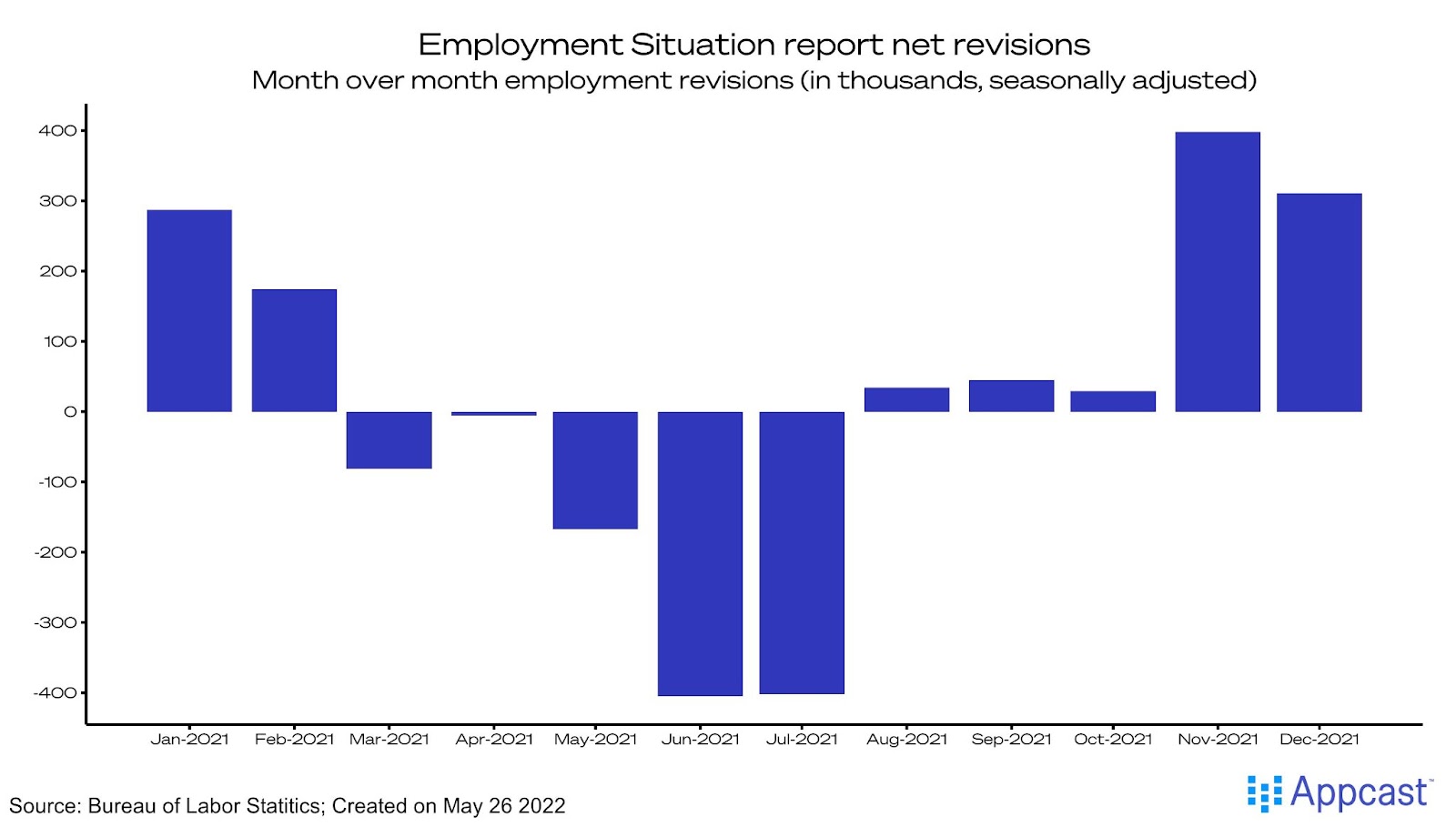Determining how the economy is performing is surprisingly difficult. COVID-19 made economists’ jobs even harder, requiring them to develop entirely new methods to measure trends in the labor market.
The Employment Situation report is a barometer of the overall health of the U.S labor market, and is heavily relied upon by the stock market. Recently, there have been remarkable revisions to the numbers they report. In November 2021, the Bureau of Labor Statistics (BLS) initially reported 210,000 new jobs. The following month, this was updated to 249,000. In January 2022, this number was updated again to 649,000!
When businesses and the stock market use these numbers to determine the strength of the economy, large swings like this present serious problems. For the past two years, the BLS has been hard at work to fix this. They recently published an article detailing the work done to mitigate these revisions. I won’t bore you with the details, but can provide a high level summary.
The BLS uses five years of previous data to measure typical seasonal patterns. Example: during the holidays, retailers hire a lot more. These patterns have been a near permanent fixture of the labor market. However, with COVID this was all thrown out the window. Total nonfarm payroll fell by 20.5 million in April of 2020.
Since the employment situation report is an estimate, large swings like this require creative thinking. The BLS developed new interventions because of extreme fluctuations, so that the pandemic period would not influence future data. This preserved historical seasonal data, and allowed for a more systematic approach to measuring the impact of COVID.
The most recent jobs reports, March and April have reported smaller revisions than what was typical in 2021. As rumors of a possible recession spread, having accurate employment data is essential to the success of the economy.








